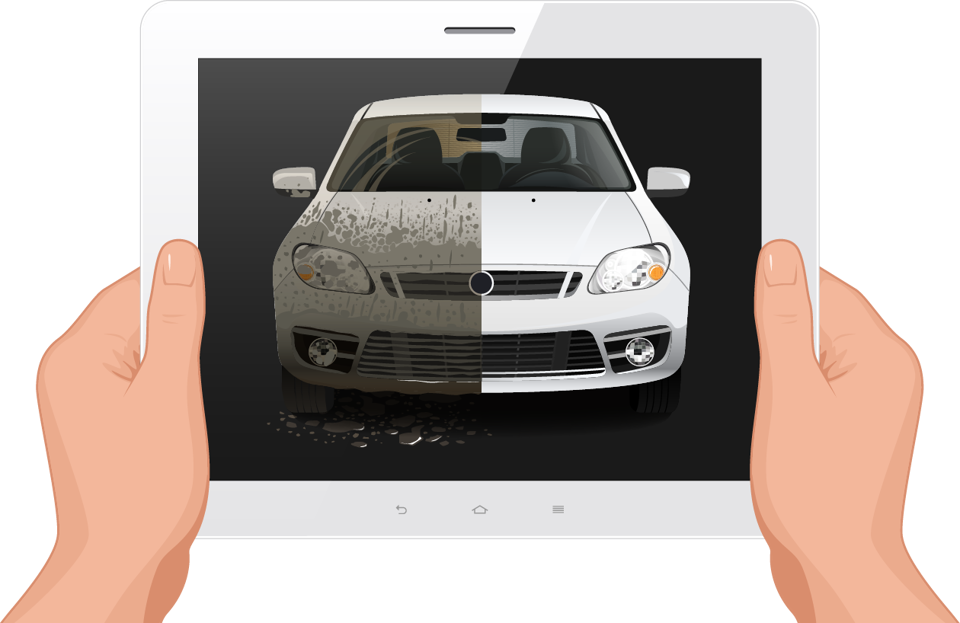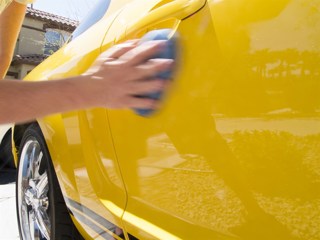As much of the car-buying process has moved online, it has reduced the amount of face-to-face time dealers have with customers.
It means that when customers do come into the showroom there’s more pressure to get everything sorted at once. This means time for introducing products such as paint and fabric protection can fall farther down the list of things to get through when buying a car.
As a result, dealers and their protection product suppliers have had to evolve with how the car-buying process has changed.
Victor Coutin, the managing director of GardX, said: “Over the last three years we’ve seen more and more of the sales process is moving online. We had to ask ourselves about how protected we were in terms of those opportunities to speak to customers about the product.”
GardX offers SpinCar as a digital service that allows dealers to highlight clickable hotspot areas of models on vehicle stock profiles, not just to focus on protection products, but to also highlight other features, such as alloy wheels or a panoramic sunroof. This also allows dealers to embed video content on paint protection that customers can interact with.
Coutin said: “We can track what a customer is interacting with through those hotspots, so we can easily identify which customers are engaging with things like paint protection.
”It can really help give an indication of how interested that customer might be in a protection product.”
GardX has also launched a merchandising proposition, which uses video to resolicit lost sales. It forms part of a new video platform that it will position to compete with companies such as CitNow.
Dealers can send customers a video featuring the sales executive who sold the vehicle, where they can explain the options for higher levels of vehicle preparation before handover.
The video can be dealer-branded and also features a call-to-action button to accept the offer of an upgraded preparation to indicate to the sales executive that the customer would like to go ahead.
Coutin said: “Some customers may have their guard up when they’re buying the car and the process they have to go through to buy a car can be overwhelming.
“We’ve created this merchandising feature so dealers can contact customers through a video message at a later stage before their vehicle is being delivered and before it goes through the preparation process. At this point, dealers can get in touch with customers again to inform them about their options with GardX before their car is delivered or they pick it up.”
GardX has seen penetration rates increase by 3-6% on those customers that didn’t originally buy at the point of sale.
The physical point of sale
With more of the customer journey moving online, does that mean physical point-of-sale materials have had their day?
Alan Graham, Supagard’s head of sales, said it has an app and a redesigned website to support digital marketing. “There’s still very much a place for ‘hard‘ copy in the showroom – leaflets and so on – but it needs to be strongly complemented by digital collateral.”
Coutin said: “There has to be a mixture and you have to recognise that more of the car-buying process is moving online so we have to reflect that. At the same time, it’s still important for us to support the dealers in the showroom with face-to-face interactions and point-of-sale materials, so those are still there too.”
Chris McDonald, Gtechniq’s lead consultant, said the company has used video to demonstrate its product since its launch more than 10 years ago.
McDonald said the company looked at demonstrating its product with bottles and paint tiles, but he felt it wasn’t the right fit, particularly as Gtechniq is aimed at the premium and performance car market.
Physical point-of-sale materials and demonstrations were also restrictive as a result of premium vehicle brands having very strict corporate identity standards.
He said: “You can’t have stands and posters up in a Porsche showroom, they want all their showrooms to look the same and they’ve spent millions on getting that brand environment right. We’re sensitive to that.
“This is why video works for us.”
Each salesperson has a tablet computer with the video pre-loaded.
Video demonstrations of Gtechniq can also be emailed and McDonald said this was particularly important as more sales are done remotely.
“It means dealers aren’t having to keep loads of promotional material around the showroom and we’re not breaching any corporate identity standards,” he said.
Gtechniq is producing about a dozen brand-specific videos, so if the demonstration is for a Porsche customer, it features a Porsche model.
McDonald said this is important as the types of customers they see are usually more brand-loyal and would rather see a demonstration on a McLaren if that’s the brand they are buying, rather than seeing product demonstrated on a Ferrari.
“We asked for a lot of feedback from our dealer network to figure out what we needed to include in the video and we’ve got it down to 1 minute 40 seconds to explain all the main details about the product, through to handover and aftercare. Any longer than that and you’re going to lose people’s interest,” said McDonald.
The video content is reviewed every 12-18 months to look at featuring new product details or if a car franchise brings out an interesting new model that would be
interesting enough to prompt a reshoot.
Macdonald believes the videos are a key element in keeping the average conversion rate at about 60%. Top performing dealers achieve 100% penetration after showing the video, he said.
Stephen Emery, senior marketing executive at Premia Solutions, is another advocate of video. Premia Solutions offers insurance products such as GAP, SMART repair and tyre and alloy wheel protection.
He said: “This can be particularly useful if you’ve bought on a PCP or PCH and the car needs to go back in a certain condition.
“We’ve found that offering videos with real-world examples of how our products can be useful can really help explain the benefits in an informative and simple way.”
Online training
Lance Boseley, Jewelultra marketing director, said the company developed an online training portal for dealers using video content this year to help them close sales of Diamondbrite paint and fabric protection.
He said that in order to protect the profit potential of paint and fabric protection products for dealers, it was imperative that it worked to create a platform that can be used at the point of sale and something that can be sent out to customers to view in their own time. It also has a web app for dealers, which can be branded to suit the manufacturer.
“The customer-facing app lets dealers show customers the results of paint and fabric protection while they are in the showroom,” said Boseley.
“The interactive information in the app can also be emailed to the customer. These digital tools play a vital role in promoting our products in a modern and interactive way.”





















Login to comment
Comments
No comments have been made yet.